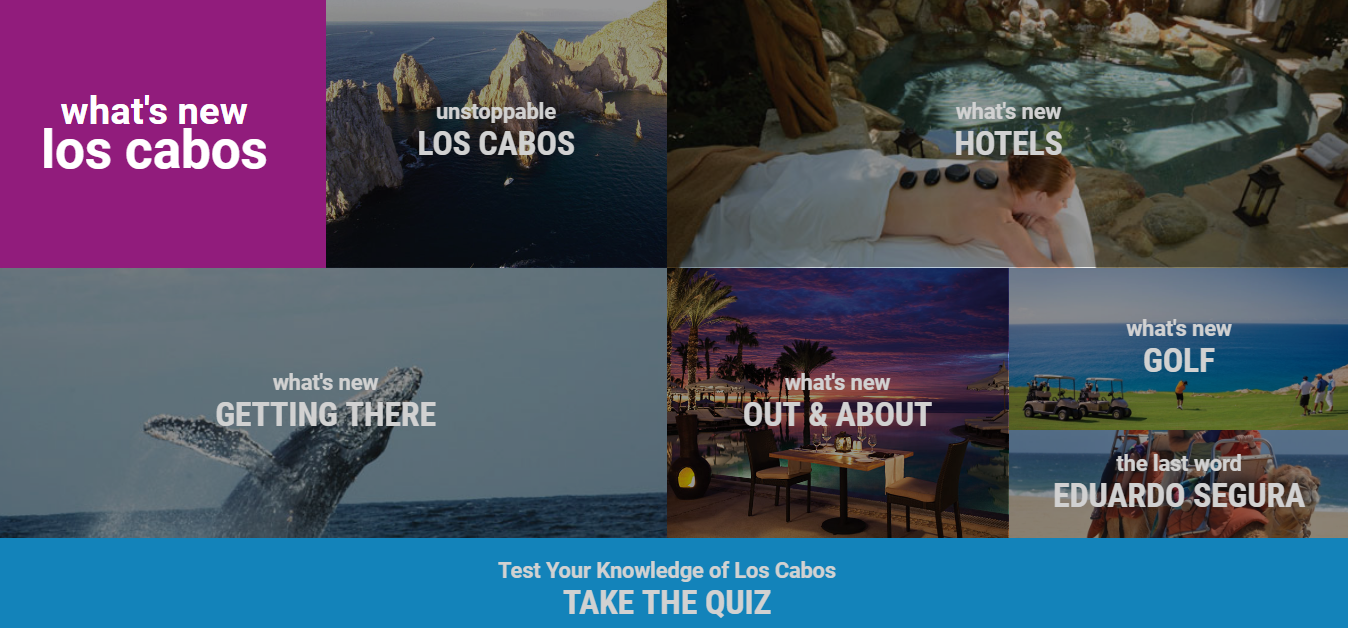Four Content Marketing Trends You Need to Use in 2018
Content marketing is an area where businesses that invest properly see a good return on investment. Unfortunately, many businesses don’t invest correctly in this space. Many elements factor into the success or failure of a content marketing campaign. Quality of content, strategy development, and better, more focused content distribution targeting are some key areas businesses should focus on. To ensure your business stays ahead, you want to know what to expect in the coming year. Discover some top trends the content marketing world will see in 2018.
1. Updated Original Content
Before the internet age, content consumers followed a more rigid viewership schedule. The news came on at 6:00, football was on Sunday, and their favourite sitcom aired once weekly. Everything changed with on-demand programming options. Services like Netflix, Hulu, and YouTube changed how content was delivered. Users were able to view content whenever they wanted to. Consequently, the demand for new and original content grew as well.
The world of content marketing for the web has evolved in the same pattern.
Content producers now follow quicker turnaround deadlines and prioritize updated content, as users are now accustomed to seeing something fresh and immediately accessible constantly at their fingertips. Building a content strategy that emphasizes and delivers continuously updated original content will give users a reason to keep returning to your site, while simultaneously boosting your SEO rankings.
An audience that values the originality, timeliness and high-quality of your digital content can provide additional conversions and interactions, which can be translated to different services or products. In one example, CBS bet the bank that Star Trek Discovery would draw a significant audience, and they planned the launch of their online streaming service, CBS All-Access, around the show’s pilot episode. Delays forced CBS to use a different original show as the initial launch to get attention, but the concept remained, and CBS still reaped the benefits of Discovery later on.
Give the customer content they can’t find elsewhere, and use that content to market other content and deliver advertising. Earning customer loyalty has always hinged on giving them something they want or need, with an inherent originality in the trade. Now, companies simply enjoy more ways to accomplish this. A company not producing original and updated content through its marketing strategy will likely fall behind the competition.
2. Live Streaming
In recent years, online videos have taken over, thanks in part to the spread of high-speed internet and video-sharing services. Today, anyone with a smartphone or a webcam can make a video, upload it, and build a following. Do a search for a game walkthrough or a DIY project, and you are likely to find your top search hits dominated by videos.

However, uploaded or static videos don’t hold a candle to the bonfire that is live streaming video. Give an audience the ability to interact with content as it is going on and you give them something that they can truly engage with. Facebook Live offers people the chance to be with their friends, or other content creators they follow, as those influencers share a part of their lives. Suddenly, a mother who is away for a business trip can join her husband and daughter for the July 4th fireworks. A military family living in Germany can bring their extended family to them for Christmas or New Year’s Eve in real-time.
One prime example of a company that has capitalized on live content is Twitch. This streaming service offers gamers a chance to stream their gaming activities live to the world and to interact with viewers through live chat. Through services like this, gaming and other activities become a more interactive experience. Now, Twitch offers creative people, such as artists, chefs, musicians, or cosplayers, a chance to stream their projects, and even allows podcast networks or small internet media companies an avenue to further connect with viewers.
Progressive firms can offer customers a unique look inside the company’s premises, giving the customer base a behind-the-scenes look at the team making the company’s products, or a sneak peek into what’s coming next. Software developers can discuss their daily tasks and the tools they use. The possibilities are endless for the smart marketing team to take such moments and draw customers further into their love and support for a company. As of 2016, more than 80 percent of respondents to a survey indicated they preferred live video to a blog or social media posts, but only 14% of companies reached out through live video. This means a large gap exists for a company to step in and capitalize on what customers want.
3. Living, Interactive Content
Beacon technology takes advantage of real-time contextual personalization to deliver a customized experience quickly and conveniently, thereby adding value to the customers’ lives in ways that matter. A customer can now walk into a business for which they have the app installed and have a notification inform them that certain products are on sale. If the customer has a rewards card with the business, the beacon app can track those purchases to avoid offering discounts on items purchased recently. As of 2016, annual totals of queries for information from beacon programs on Android devices exceeded 40 million. Many companies can benefit from such an app that doesn’t currently implement this strategy, missing a golden opportunity to strengthen customer loyalty.

source: Travelweekly.com
With the recent iteration of augmented and virtual reality hitting the market, companies can enjoy an even stronger way to bring customers into the fold. Imagine having an app that used augmented reality to encourage searching the store for digital items. Also, gamification is a great way to involve interactive content, which can help encourage user exploration and conversion rates with promotions. This adaption can make the experience more enjoyable and give users something valuable in return and a motivation to come back. A company could partner with a game app that uses augmented reality to place ads in key places
4. The Rapidly Evolving IoT
Another means for delivering content directly into customers’ worlds is the Internet of Things (IoT). This refers to technology that encompasses devices and content delivered through them using mediums other than screens. Siri and Alexa stand as the prime examples, giving a user the ability to interact with a variety of devices or services, including content delivery. Estimates predict that approximately $6 trillion will be invested in IoT technology and solutions within five years. The interest around the anticipated boom in IoT creates various opportunities for secondary markets and windows for new forms of interconnectivity.

Healthcare is one of leading industries being adapted to accommodate IoT devices. Alexa can currently give someone instructions for CPR and explain how to spot a heart attack for example. New developments are on the horizon. The younger, more health-conscious generation has created a large market around wearable devices and monitoring systems. As AI continues to influence how we interact with digital applications, content takes on an entirely new shape. Virtual trainers, interactive exercise instructors that adapt to a user’s body responses, and many other potential forms of consumer digital interaction provide new avenues for delivering content.
Additionally, healthcare institutions and their existing patients are increasingly reliant on big data and comprehensive healthcare solutions. IoT can influence how patients deal with pharmaceutical industries through interactive and wearable gadgets. Companies can leverage this constant device interaction to plan audiobook sessions, news reports, or health tips around a users’ mealtime habits or sleep patterns, to provide content when it’s most appropriate. With so many devices pairing and exchanging handshakes for a variety of purposes, the opportunities for growth are endless.
Pay attention to these four trends to keep your content marketing fresh, original, adaptive, and forward-facing in 2018.
 Stephen Moyers is a digital marketer, designer, avid tech-savvy blogger. He is associated with Los Angeles Web Design Agency – SPINX Digital. He loves to write about web design, development, digital marketing, social media and much more. Apart from writing, he loves travelling & photography. Follow Stephen on Twitter & Google+.
Stephen Moyers is a digital marketer, designer, avid tech-savvy blogger. He is associated with Los Angeles Web Design Agency – SPINX Digital. He loves to write about web design, development, digital marketing, social media and much more. Apart from writing, he loves travelling & photography. Follow Stephen on Twitter & Google+.
How to Use SEO and SEA Together in Search Engine Marketing
In digital marketing, search engine marketing (SEM) plays a critical role in improving online…
0 Comments10 Minutes
Content Marketing Growth Hacks: Real Shortcuts to Drive Traffic
Are you still lagging in content marketing? Sticking to these old strategies seems…
0 Comments10 Minutes
How to Build a Strong Local Following Using Social Media Marketing
In the days of likes, shares, and stories, local businesses have a golden opportunity to create…
0 Comments9 Minutes
Why WooCommerce is the Best Choice for Your Online Store?
WooCommerce stands out as a top option for anyone looking to build an online store. This platform…
0 Comments8 Minutes
How to Use AI-Powered SEO Tools for WordPress eCommerce
SEO is a critical factor in the success of any e-commerce WordPress store. As competition…
0 Comments11 Minutes
Why Short-Form Videos Are the Future of Content Marketing
Your Instagram customers spend over 50% of their time watching short-form videos and reels. Rather…
0 Comments12 Minutes
The Role of Digital Marketing in Business Growth
Online marketing touches every aspect of a business, whether it is initiating the idea or for an…
0 Comments3 Minutes
AI Meets Authenticity: Balancing Automation and Human Touch in Content Marketing
Is your brand starting to sound like a robot? In a world where algorithms write faster than any…
0 Comments8 Minutes
1 Comment
Comments are closed.









This was an extremely nice article! It is seen that live video and interactive kind of content are going to be essentials from now on. They are already all around on social media platforms, and content marketing strategies will have no option but to include them – if not doing it yet. Plus, storytelling has also become increasingly powerful, don’t you think so? I’m glad I came across with your article – it’s going to be pretty useful for me! That’s why I’d like to complement this information sharing with you the infographic that we recently posted on our blog: https://www.pointvisible.com/blog/content-marketing-2018-trends-and-statistics-final-call-for-boarding/. I hope you find its stats and predictions interesting 🙂